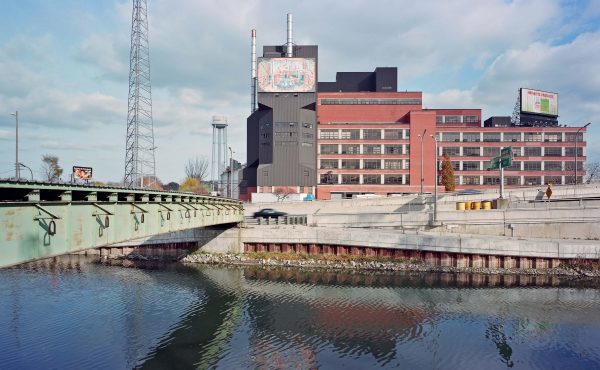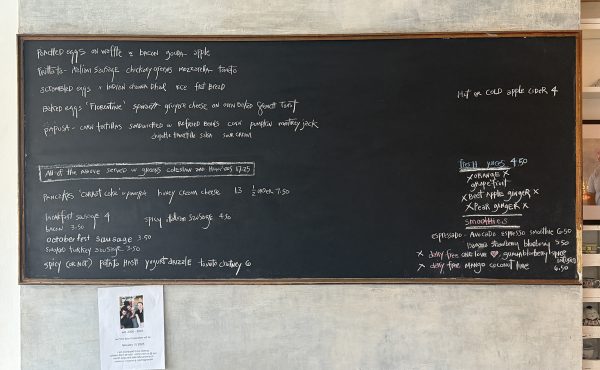
In the (almost) five years since our first kid was born, my wife and I have amassed an impressive collection of children’s books. But as our collection grew, I noticed that only a handful of our books depict cities in a positive light. The vast majority of children’s stories take place in bucolic settings, which I’ll admit makes sense if you’re writing about anthropomorphic woodland creatures. What’s worse, many books that do feature urban settings tend to demonize them as polluted or dangerous places (witness the classic Harry the Dirty Dog or the works of Bill Peet).
This realization set me on a mission to find kids’ books that celebrate and take place in—or, even better, are actually about—cities. I’m pleased to report that I’ve found a handful. If you have kids, or know any, and you’re looking to give them a gift that subtly inflicts your pro-urban agenda on their young and malleable minds, you can’t go wrong with any of these fine titles:
 Jonathan Cleaned Up — Then He Heard a Sound
Jonathan Cleaned Up — Then He Heard a Sound
Robert Munsch
No list of city-focused books would be complete without this, Robert Munsch’s hilarious ode to bureaucratic ineptitude. When a subway station appears in his apartment, Jonathan does what any good citizen would do: he goes to City Hall to complain. He navigates his way through the red tape and eventually discovers the secret to getting things fixed: just apply copious amounts of blackberry jam. Long-time Torontonians’ hearts will warm at the sight of a red Gloucester subway car, though unfortunately for Jonathan, said train deposits hundreds of inconsiderate commuters straight into his living room.
 The Curious Garden
The Curious Garden
Peter Brown
New York’s High Line is the inspiration for this amazing story about Liam, a boy in a drab city who finds a few tenacious plants growing on an abandoned railway and decides to become a gardener. As Liam’s horticultural skills improve, his garden starts to grow of its own accord, and soon takes over the entire city — with a bit of help from a few other guerrilla gardeners inspired by Liam’s example.
 You Won’t Like This Present as Much as I Do!
You Won’t Like This Present as Much as I Do!
Lauren Child
This is one of a series of books featuring Charlie and Lola, a set of siblings who live in a low-rise apartment building in an unnamed British city. The first few books were written by creator Lauren Child herself, but subsequent releases—this one included—are based on scripts from the Charlie and Lola TV series. In You Won’t Like This Present as Much as I Do!, Lola must choose a gift for her best friend, Lotta, taking into account the fact that Lotta’s flat is too small to accommodate Lola’s ideal gift: an “actual pony.”
Charlie and Lola’s apartment building figures prominently in many of the stories; Charlie’s best friend, Marv, lives in the same building. Given that 99% of children, when asked to draw “a house,” will produce a picture of a detached two-storey structure with a chimney and a big tree in the yard, depictions like this matter a lot.
 The Subway Mouse
The Subway Mouse
Barbara Reid
Torontonian author and illustrator Barbara Reid is best known for her stunning Plasticine illustrations, which have graced her own books as well as stories by other authors. But she also deserves credit for portraying city life in her stories, including Read Me a Book (which includes an image of a parent reading to a child on a vintage TTC bus, and another depicting an apartment building full of people reading in living rooms and on balconies) and, best of all, The Subway Mouse. This tale of a young mouse who sets off from his subway station home in search of a mystical place known as Tunnel’s End will immediately catch the eye of Junior Rocket Riders city-wide — if only because Reid renders the iconic TTC font in Plasticine right on the cover.
 Martha Blah-Blah
Martha Blah-Blah
Susan Meddaugh
Martha is a talking dog whose amazing verbal powers are the result of her daily consumption of alphabet soup from Granny’s Soup Company, whose product proudly features “every letter in every bowl.” But when Granny’s new owner fires half of her 26 alphabeticians to cut down on overhead (and slyly changes the company slogan to “letters in every bowl”), Martha’s speech becomes garbled and she sets off through the city to track down the source of her problem. The urban setting is mostly backdrop in the Martha series, but bonus marks to author Susan Meddaugh in this one for her sly dig at the perils of corporate greed—won’t somebody, please, think of the talking canines?
 Look At That Building!
Look At That Building!
Scot Ritchie
When I reviewed this book in the fall 2011 issue of Spacing, I took author and illustrator Scot Ritchie to task a bit for turning what could have been a great reference book for kids about the components of buildings into a rather awkward narrative about friends who explore their city to get ideas about how to construct a doghouse. But despite this, the book does a fantastic job explaining about foundations, roofs, columns, and all those other structural elements that kids tend to ask surprisingly complex questions about when you least expect it. Thankfully, now there’s a simple way to deliver the answers.
 The City ABC Book / City 123
The City ABC Book / City 123
Zoran Milich
Although these are not storybooks, I would be remiss not to make mention of Zoran Milich’s inspired set of picture books. Street furniture, signs, and urban infrastructure all become source material for letters and numbers, and Milich’s keen eye for detail brings out the urbanist in all of us: you’ll never be able to look at the metal backing of a park bench again without noticing it’s shaped like a J.
photo by Erica Minton



5 comments
These look great! I’m also very fond of Night Cars.
I’ve always had a place in my heart for Viriginia Lee Burton’s The Little House. In hindsight/flipping through the book it appears to be a story about urban sprawl/progress, but in this case the sprawl is a high-density metropolis. I don’t know if the story subconsciously pushed me into urban planning.
Great assortment of books. ABC City Guides for Kids (www.kidstravelguides.com) is another source for visual souvenir guidebooks designed specifically for kids.
My upstairs neighbour Stéphane Poulin is a children’s author and illustrator and many of his books take place in the old neighbourhoods of Montreal. Have you seen Josephine (in English, “Where’s that cat”) is a romp through east-end neighbourhoods http://www.amazon.ca/Wheres-That-Cat-Stephane-Poulin/dp/0887766447/ref=sr_1_32?s=books&ie=UTF8&qid=1324162062&sr=1-32
Too bad his “A Beautiful City ABC book is out of print).
My daughter enjoys a series of Knuffle Bunny books in which attractive photographs of Brooklyn provide the backdrop to the adventures of the hand-drawn characters.
Also, Curious George Takes a Job one of the original series of books, has a lot of nice paintings of city scenes – presumably of New York.
Mike